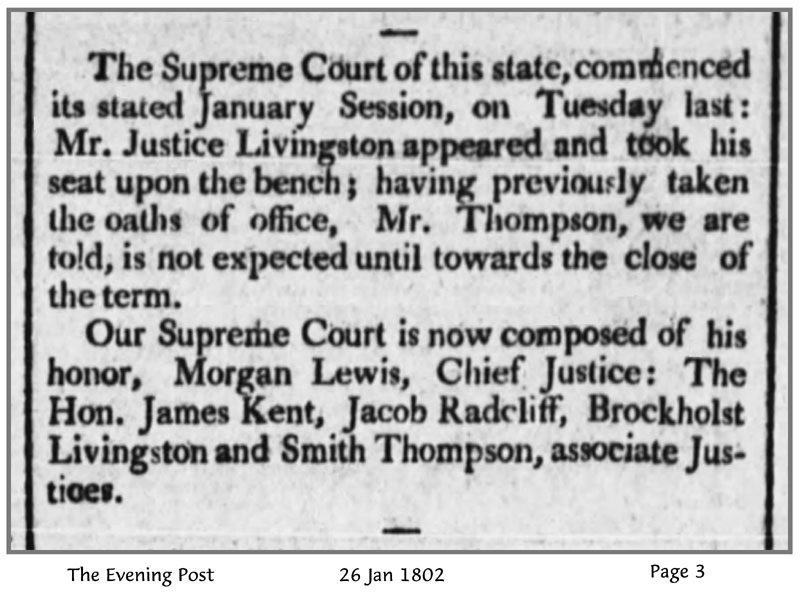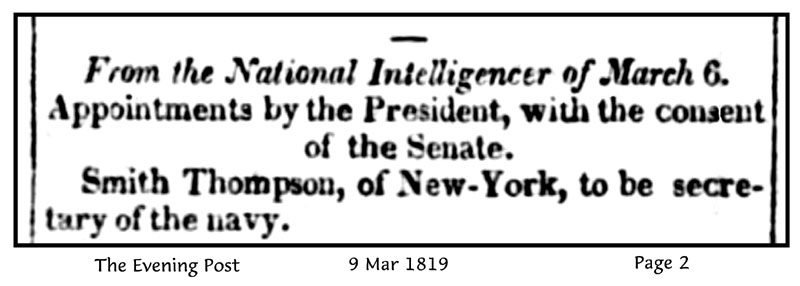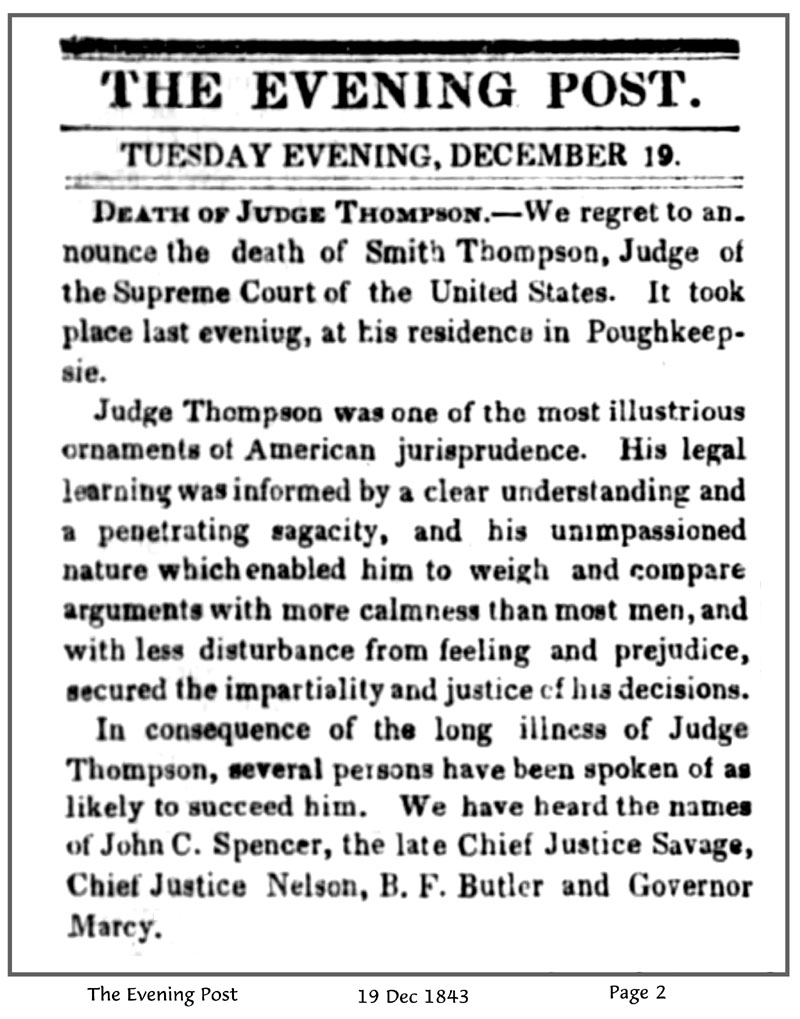Justice Smith Thompson participated in three separate stages of the Amistad case’s passage through the federal court system. As the justice assigned to the circuit courts for the Second Circuit, Thompson presided over the brief hearing of criminal charges directed against the Amistad captives in September 1839, and he ruled that the Mende could not be prosecuted in the courts of the United States for alleged acts that occurred on a foreign vessel at sea. During this same session of the circuit court, Thompson presided over the abolitionists’ appeal for release of the Mende under a writ of habeas corpus. He expressed his personal abhorrence of slavery, but reminded the lawyers that the Constitution and laws of the United States recognized the right of one person to control the labor of another. His duty, as he announced it to the court, was not to rule on the abstract right of slavery but on the proper jurisdiction of the district court. The justice denied the release of the Mende as long as they were the object of property claims pending before the district court.
Thompson again presided over the U.S. Circuit Court for the District of Connecticut in April 1840 when that court heard the U.S. Attorney’s appeal of the district court decision ordering that the Mende should be returned to Africa. Thompson affirmed the district court decision without comment, on the assumption that it would in any case be appealed to the Supreme Court. He also rejected the plea from the Mende’s lawyers that the case be dismissed on the grounds that the United States had no interest in the Spanish property claims on which it based the appeal.
Justice Thompson then heard the arguments presented before the Supreme Court and joined the opinion written by his colleague Justice Story. In all of these proceedings, Thompson had little opportunity to comment on the merits of the various claims alleging that the captives from the Amistad were lawfully-held property of the Spanish planters.
Smith Thompson was born in New York and attended the College of New Jersey (now Princeton University). He read law with James Kent, one of the most influential jurists and legal writers in the early republic. After a brief term in the state legislature, Thompson was appointed to the New York Supreme Court in 1802 and became chief justice of that court in 1814. He left the New York court in 1818 to accept President James Monroe’s nomination to serve as secretary of the navy. During his tenure as a cabinet secretary, the navy was responsible for enforcing the prohibition on the international slave trade, and Thompson was directly involved in the cases of two slave ships, the Antelope and La Jeune Eugenie, both of which became the subjects of federal court cases that served as precedents for Amistad.
In 1823 Monroe appointed Thompson to the Supreme Court of the United States. Thompson was assigned circuit duties in the Second Circuit, which consisted of New York, Connecticut, and Vermont. On the Court, Thompson supported a state rights position that was often in opposition to the nationalist ideas of Chief Justice John Marshall. He served on the Supreme Court until his death on December 18, 1843.











![]() Copyright © 2014, InterMedia Enterprises
Copyright © 2014, InterMedia Enterprises